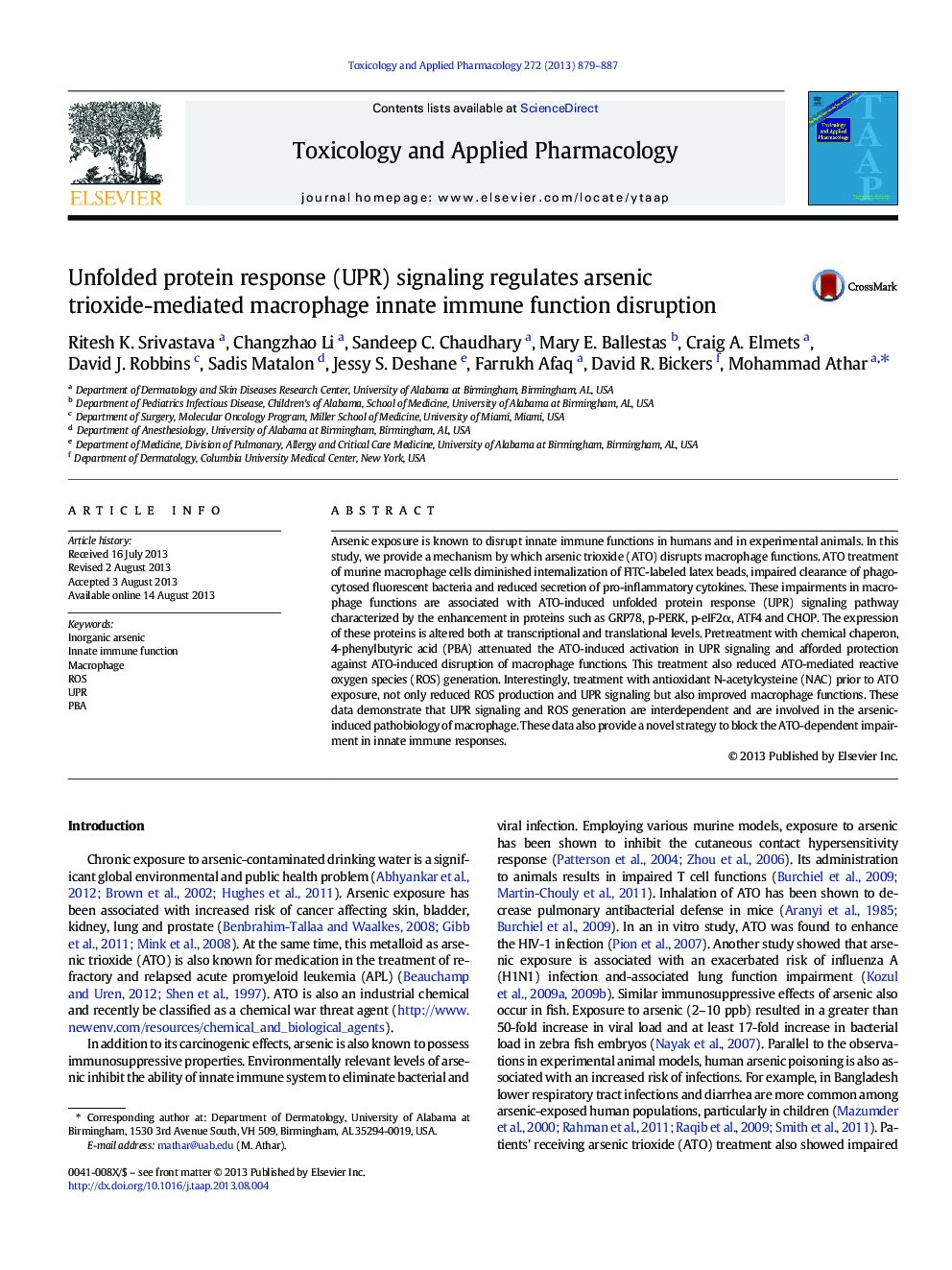| Article ID | Journal | Published Year | Pages | File Type |
|---|---|---|---|---|
| 5846415 | Toxicology and Applied Pharmacology | 2013 | 9 Pages |
Abstract
Arsenic exposure is known to disrupt innate immune functions in humans and in experimental animals. In this study, we provide a mechanism by which arsenic trioxide (ATO) disrupts macrophage functions. ATO treatment of murine macrophage cells diminished internalization of FITC-labeled latex beads, impaired clearance of phagocytosed fluorescent bacteria and reduced secretion of pro-inflammatory cytokines. These impairments in macrophage functions are associated with ATO-induced unfolded protein response (UPR) signaling pathway characterized by the enhancement in proteins such as GRP78, p-PERK, p-eIF2α, ATF4 and CHOP. The expression of these proteins is altered both at transcriptional and translational levels. Pretreatment with chemical chaperon, 4-phenylbutyric acid (PBA) attenuated the ATO-induced activation in UPR signaling and afforded protection against ATO-induced disruption of macrophage functions. This treatment also reduced ATO-mediated reactive oxygen species (ROS) generation. Interestingly, treatment with antioxidant N-acetylcysteine (NAC) prior to ATO exposure, not only reduced ROS production and UPR signaling but also improved macrophage functions. These data demonstrate that UPR signaling and ROS generation are interdependent and are involved in the arsenic-induced pathobiology of macrophage. These data also provide a novel strategy to block the ATO-dependent impairment in innate immune responses.
Related Topics
Life Sciences
Environmental Science
Health, Toxicology and Mutagenesis
Authors
Ritesh K. Srivastava, Changzhao Li, Sandeep C. Chaudhary, Mary E. Ballestas, Craig A. Elmets, David J. Robbins, Sadis Matalon, Jessy S. Deshane, Farrukh Afaq, David R. Bickers, Mohammad Athar,
